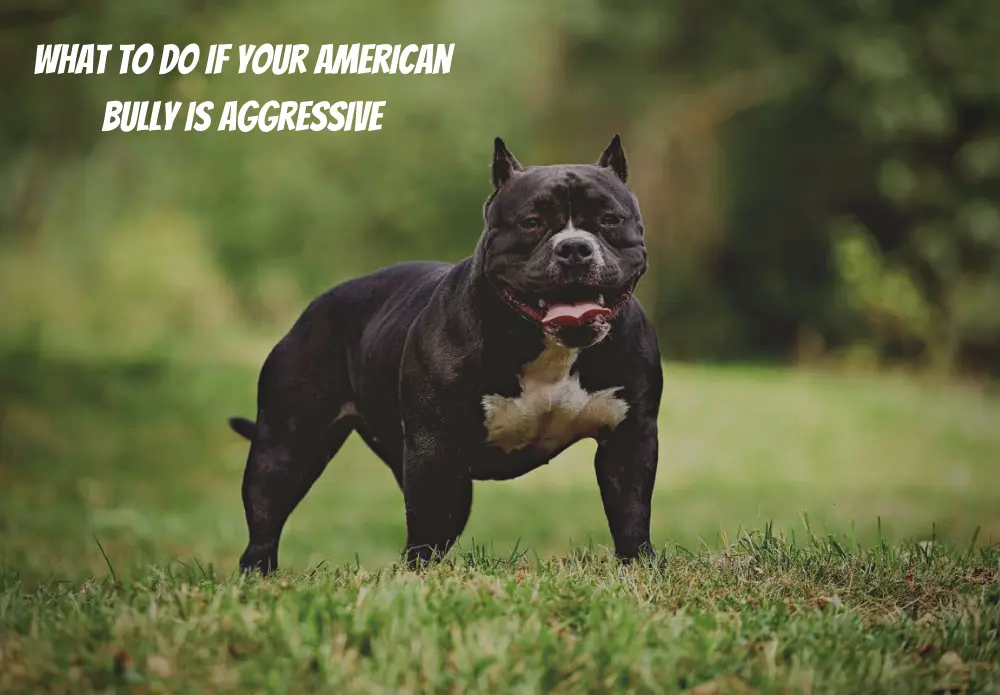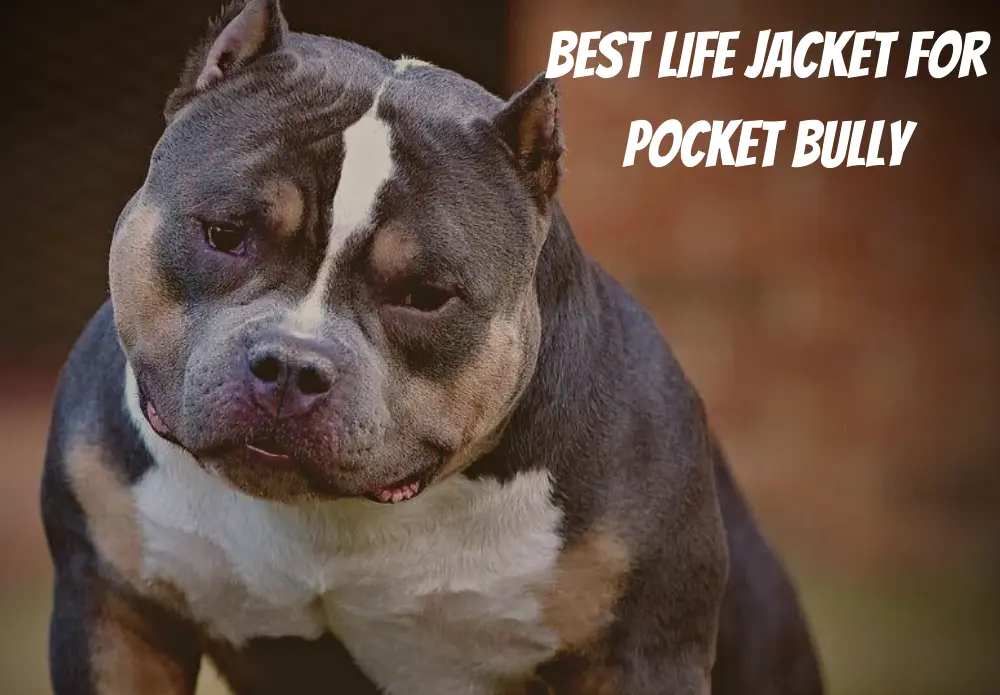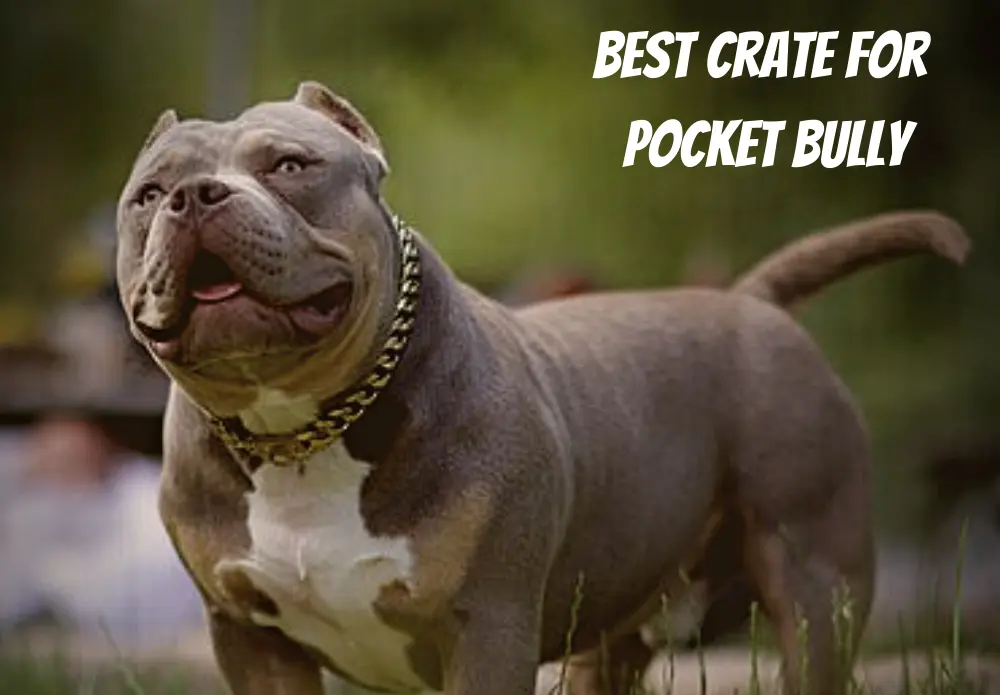The American Bully is one of the desired dog breeds, yet it is still one of the most badly reputed dogs. All of this is just stereotyping of how they look.
American Bullies are among the most intelligent and loveable dogs and are never aggressive. But like any other puppy, American Bully can become aggressive depending on many factors.
Let’s talk about how to stop your American Bully from becoming aggressive and eventually biting you.
Is the American Bully an Aggressive Breed?
American Bully is one the best dog to get as a family pet. They have a warm temperament, are competent in learning, and are easily trainable and socialized as they get along with everyone and everything.
American Bullies are very loyal and affectionate dogs of breed despite having a look of a scary dog. On the whole, they are sweet, gentle giants, and all of this combined, the American Bully is not an aggressive dog by nature.
American Bully can get aggressive only on rare occasions, like when they are provoked, untrained, unsocialized, and trained to be aggressive by an incompetent owner.
American Bully may look scary, but they get the biggest smile you will ever see when they smile. There are numerous reasons why your American Bully may be acting aggressively; let me explain.
Types of Bully Aggression
An aggressive American Bully is dangerous for the neighborhood, even if it shows small patches of aggressiveness. It can cross its nature and hurt someone anytime if the hostility is not controlled.
There are many different types of aggressive behavior among Bullies and dogs.
1. Dominate Aggression
American Bullies with Dominate aggression show aggressive dog signs towards strangers and do not discriminate. Only one person in the family usually has control over the dog.
“He doesn’t do it all the time” is something you could often hear from the owner of a dominant, aggressive American Bully.
2. Fear Aggression
Nervous and insecure Bullies may exhibit fear aggression, which is a way of protecting themselves against what they consider threatening. Even doorbells and telephone rings may trigger the aggressive actions of such dogs.F
American Bullies resort to barking, growling, or snarling and may bite when cornered or feeling threatened. It’s a serious issue, as the dog gets bolder with age and must be recognized and taken care of early.
3. Territorial Aggression
Territorial aggression makes an American Bully growl, lunge, or bite anyone who enters their territory or domain.
Bullies can be aggressive even during walks with the owner, as they may consider the pathway their territory and other people or animals on the pathway intruders.
4. Possessive Aggression
American Bully puppies often show some degree of possessiveness, which you must control at an early age.
If not done, it develops into possessive aggression, where your dog will bark, growl, snap, or bite when anyone or anything approaches things that your dog considers for itself.
Food, toys, or books you have left to be claimed by your dog can be objects that stimulate aggressiveness in these cases.
5. Punishment Aggression
You can cause this type of aggression in your Bully if you are overly abusive or dominant in punishing it.
Do not point the finger at your Bully, stand over it threateningly, or worse, hit your Bully. All these insane acts can lead to your Bully becoming aggressive sooner or later.
6. Pain Aggression
American Bullies have different degrees of tolerance, just like humans. Some aggressive behaviors are involuntary actions against injuries or illness.
In such cases, your Bully might snap or bite at you when you or someone from your family tries to touch him. So, it is always best to consult a veterinarian before concluding about its aggressiveness problem.
7. Predatory Aggression
This kind of aggression is common in breeds with hunting breed ancestors. In this type of aggression, your Bully will chase objects that are moving away.
The purpose may be another animal, a vehicle, or a jogger. You must be careful when taking your Bully for a jog if it is affected by predatory aggression because your Bully is not going just to chase the jogger or the children away but may even attack if possible.
8. Maternal Aggression
Seen often in a female that has just given birth to a litter of puppies, this instinctive reaction occurs when a person or animal approaches the puppies. It’s not much of a problem, as it vanishes when the litter moves out to live independently.
Some signs that an aggressive dog is about to snap:
- Growling
- Snarling
- Curling lips
- Mounting people
- Lunging
- Snapping
- Blocking your path
- Barking aggressively
- Biting
What to Do if Your American Bully Puppy is Aggressive?
Identifying the aggressiveness problem in your pet, and treating it when it is a puppy, is the easy way to give it a happy life.
However, it does not mean that older dogs that show aggressive behavior cannot be treated. An aggressive dog’s actions can still be controlled and modified, though it tends to be more robust with older dogs.
The responsibility of identifying an aggressive dog and treating it is yours. As a responsible dog owner, you must take care of the following points:
Training sessions that include many obedience training lessons must be given to the puppy when it is about eight weeks old. Obedience training must then be mandatory as the dog ages, allowing you to control your dog.
You must take care of your dog and make regular checks to the veterinarian so that your dog does not suffer from hidden injuries or diseases that may cause pain and make it react aggressively.
Study the different signs of aggression and determine the type of aggression that your dog is suffering. Keep yourself informed about your dog’s ancestry history and medical history.
Recognize that your dog is dangerous when it is aggressive and living with such dangers and liabilities is not safe for you. Do not try to save your dog when it shows signs of aggressiveness by giving excuses like,
“He doesn’t do it all the time,” “He bites but never breaks the skin,” or “He is the sweetest dog in the world, except for the growling problem.” By pretending to be naive about the aggressiveness issue troubling your dog, you are only making it worse for your dog.
Dog owners should always understand that dogs need as much care and affection as humans and other animals do. An Aggressive Dog is not something to be hated or that must lead to the discrimination of an entire breed of dogs.
It is just the result of improper training and grooming on the owner’s part that builds on within the dog and comes out in a dangerous form.
With proper training and patience from the dog owner, no dog would show any signs of aggressiveness and would be a happy dog.
Training and Socialization
An aggressive American Bully will bite you or try to bite you. Sometimes it’s just simple play-biting. American Bullies puppies learn much about the world by using their mouth.
Biting, chewing, nipping, and placing everything in their mouth is a natural behavior. The objective is to guide the behavior appropriately and manage their teething stage as best we can.
Understanding that your pup is scouring as well as soothing its irritated gums is the first step to making progress. You must stay patient with your puppy as they discover and grow.
Putting these strategies into practice while maintaining your composure will greatly assist in getting your American Bully puppy to cease biting or displaying aggression.
1. Redirection
American Bully puppies chews and bits rope. My American Micro Bully is chewing his rope toy. Redirection is the method I use most often with my Micro Bully puppy.
The fantastic thing regarding puppies is that everything is still fascinating. Shifting their concentration away from gnawing on your pants, shirt, hand, shoes, or the couch is straightforward and quick.
Keep a combination of treats and toys convenient wherever you are in the house. When your puppy starts to bite on something or somebody, you shouldn’t quickly get their concentration with a treat or toy.
Work in an impromptu activity session, or reward them with a toy to play with. I keep my pup in my office during the daytime as I work.
When Terry gets restless, as I like to call them, he frequently nibbles and chomps. I can quickly divert his attention by keeping a bowl of snacks and a few of his favorite toys close by.
2. Distraction
Distraction is very similar to redirection but slightly more proactive. This technique allows you to handle your American Bully puppy’s focus before or just as they begin biting.
With this method, I like to use some chew toys and my homemade frozen treat wrap.
Providing my American Bully with an exercise like working on a frozen treat can distract his engagement from chewing me and other unwanted things.
Keeping his brain distracted and focused on getting the treats out or working on his chew toy will distract him from nipping and biting. Such activities also drain a good amount of energy, making them less likely to keep biting once they have finished the activity.
3. Emulation
When pups play, and one bites the other too badly, they yelp. Doing this can teach your puppy how much play is too much. If your puppy starts to attack you, try imitating this by yelling loudly.
Emulation might seem silly, but it does work. I had done it several times when I could not get a toy or treat quickly enough. The yelp practically startles the puppy, and he stops right away, most of the time.
Give this technique a shot. When your American Bully puppy discovers he hurt you, he will be hesitant to bite you afterward or at least learn that he is being too harsh.
4. Socializing
Socializing your puppy with other doggies is one of the easiest ways they can learn. Dogs play with their mouths and learn what level of play is too rough for each other, as mentioned in the emulation strategy above.
Getting your Bully puppy around other dogs to play and socialize is an excellent way for them to learn. Plan play outings with your families, neighbors, and friends to give your puppy the opportunity to socialize with other dogs in a secure setting.
5. Exercise and Activities
When my American Micro Bully is mouthy and relentlessly attempting to bite, nibble and chew me, I understand it’s due to lack of exercise.
All the distractions and redirections will last a few minutes when he hasn’t had an opportunity to get some exercise. He is still a puppy, so the distance and intensity of our walks are limited now.
When puppies are young, it’s essential to avoid pushing them too much, but a slow, meandering walk can be beneficial. Walks let them burn off some crazy puppy energy via walking, sniffing, and observing the world around them.
I also like to work on training and indoor fetch games when he needs exercise. A mental activity like trick training can deplete a lot of energy.
Playing a game of fetch in your hallway or living room is also very useful mentally and physically. Fetch will let the puppy run, chew on the ball, and allow you to work in training like come and drop/release.
My pet Bully enjoys playing this game, and after an activity like this, he makes no effort to bite or nibble. Never undervalue the benefits of exercise and cerebral stimulation.
6. Deterrence
Deterrence can be utilized when your American Bully puppy is continuously going to chew things they aren’t supposed to. For my American Micro Bully puppy, Terry, it is my work desk.
He gets bored of the toy I offer him to redirect, the frozen treat I used to distract him is done, and I have a conference in 5 minutes, so exercise will have to defer.
Using a deterrence can be helpful with some doggies. I had mixed success and used this as a final resort, but it can be an excellent trick to keep on hand.
I blend up a 50/50 apple cider vinegar and plain white vinegar and apply it to the surface of whatever Terry wants to chew. Most of the time, this works; the odor and taste deter further chewing.
I have applied this method several times with an 80% success rate. Sometimes Terry is determined to chew and doesn’t care about the vinegar mix. Other times he is turned off and goes back to his toy.
7. Ignore But Never Punish
Ignoring your puppy when they bite you or your clothing is a remarkably persuasive teaching method. Ignoring your dog shows that they no longer receive the attention they crave by biting you. Action = Consequence.
I use this technique when relaxing with Terry on the couch, massaging him. Sometimes he decides it’s a good idea to chew or bite on the hand I am petting him with. Instantly I stop and entirely ignore him. If he continues, I get up and walk away, ending any petting or play
Ignoring is a very effective technique and is as far as punishment goes for Terry. Not obtaining any attention is a consequence he does not love.
Other techniques you can use to prevent aggression and biting are:
- Discourage dominant behaviors.
- Watch out for signs of resource guarding.
- Pay attention to socialization, both with other pets and with strangers.
- Use positive reinforcement training.
Prevention from Biting
Training and socialization of American Bully from an early age go a long way toward limiting destructive behaviors. Socializing may involve interaction with humans and other animals so that a Bully can learn proper manners.
Training lessons or trips to the dog playground may help. Figuring out why a puppy is aggressive is also essential. For instance, some dogs safeguard their food and treat, while others might act out because of nervousness.
Aggressive manners can often be dealt with when addressing the origin of this behavior. When teaching a Bully, a training collar or toy may help you establish dominance to teach your dog how to behave.
Due to their intelligence, American Bullies are typically quick learners. Meaning, Bullies can learn appropriate manners when put in situations where they interact with people and different dogs.
For Young American Bullies
Puppies of all breeds need a lot of work, but many people desire to create an everlasting affinity with a dog at a young age.
It also helps that puppies are lovable. When getting a Bully puppy, you can ensure it receives the proper socialization early.
However, it is important to remember that puppies usually have more energy than older dogs. With Bullies, these pups have all the exciting power of any other young dog but also have lots of strength.
Rowdy, eager American Bully pups that do not know their own strength can break things or potentially hurt people without meaning to, so a grown Bully may be a better fit for some people.
With Older Bullies
When getting an older dog, they have already learned habits and behaviors. While this can carry some challenges, getting an older dog has advantages too.
When adopting an older Bully from a shelter, you will likely be ready for what you will get because previous owners can tell you about the dog’s character and any health problems.
Some Bullies may have a problem dismissing an intuition that tells them to chase cats, while others might not like dogs of the same sex. Be sure to ask for details like this when adopting a grown American Bully.
FAQs – Frequently Asked Questions
Why Do American Bullies Become Aggressive?
American Bullies become aggressive only when they are not properly trained at a young age. Bullies have a lot of energy, and they need appropriate guidance to understand how to channel it.
An incompetent owner will never be able to bring up a Bully properly, and the Bully will develop aggression.
How Do I Get My American Bully Puppy to Stop Biting?
It is effortless to get your American Bully puppy to stop biting you. Use different techniques such as distraction, redirection, exercise, etc., as I have mentioned above in the article.
How Do You Discipline an American Bully Puppy?
You can use training, toys, treats, and dog collars to discipline an American Bully puppy.
You must establish a non-threatening dominance over them and make them understand good and bad behavior. For details, please read the above article.
Are American Bullies Hard to Train?
No, they are not hard to train. American Bullies are some of the most intelligent dogs and can be trained easily. The key is to teach them the proper training from an early age.
Are American Bully Aggressive to Other Dogs?
If an American Bully is raised in isolation, he will become aggressive, and since he doesn’t know how to interact with other dogs, he will fight them.
This is why it is crucial to socialize an American Bully from an early age by taking it to training classes and dog parks so they can meet and learn with other dogs.
Conclusion
Ultimately, the American Bully is not an aggressive breed by heart but a protective, loyal, and a caring dog who enjoys being around people. Finding the right breeder for your family is crucial if you’re interested in owning one.
The American Bully must not be confused with an attack dog; it would only attack another animal when defending its family from harm. The American Bullies’ character makes them one of the top breeds for therapy work.






